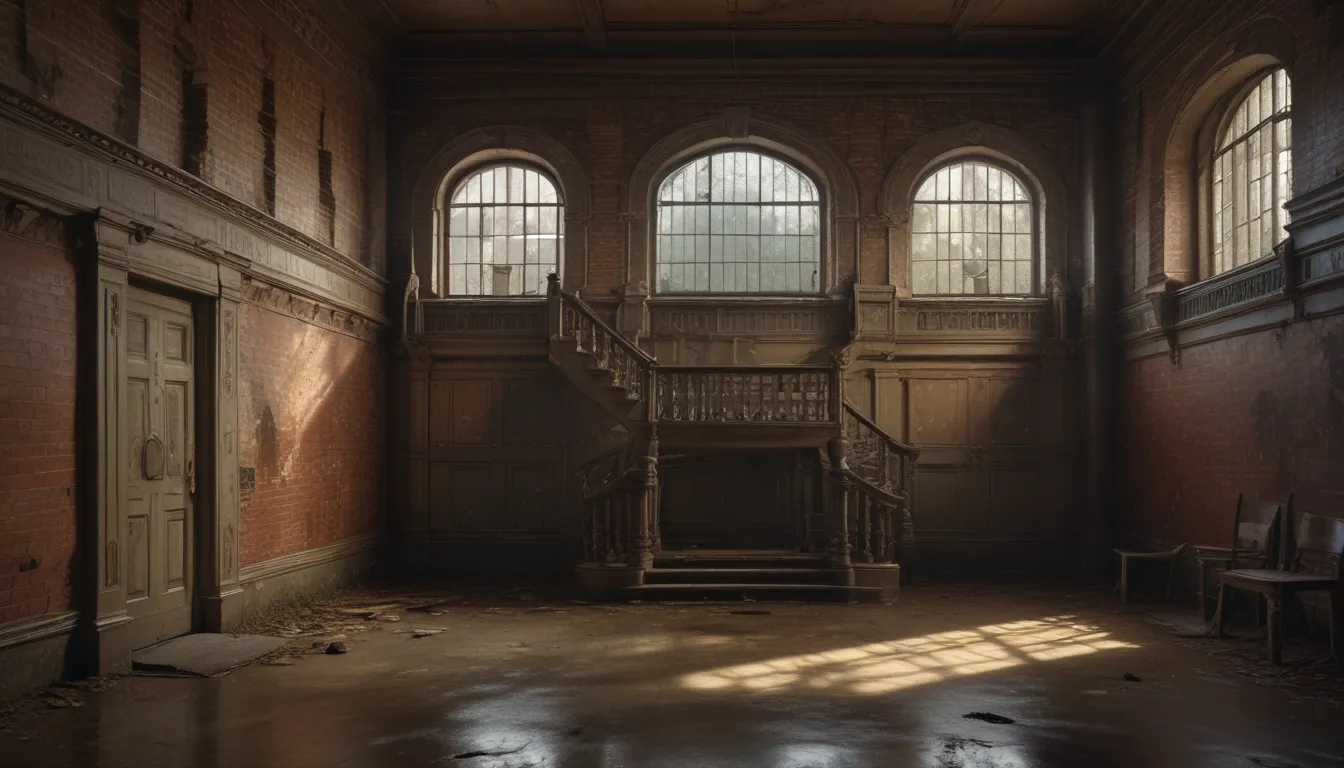The images in our articles may not match the content exactly. They are used to grab your attention, not to show the exact details in the text. The images complement the text but do not replace it.
Have you ever been intrigued by the mysteries and history of the Trans-Allegheny Lunatic Asylum in Weston, West Virginia? This iconic institution, steeped in both history and mystery, has captivated visitors from around the world with its Gothic Revival-style architecture and compelling narrative. Join us on a captivating journey through the enigmatic world of the Trans-Allegheny Lunatic Asylum as we unravel 31 amazing facts that shed light on its past, present, and profound impact on history and society. From its construction in the mid-1800s to its closure in the 1990s, this imposing structure has witnessed a multitude of events that intertwine with the evolution of mental health care, architectural ingenuity, and the human spirit. Let’s delve into the fascinating tapestry of stories that surround this historic landmark and explore the enduring legacy of the Trans-Allegheny Lunatic Asylum.
Unveiling the History of the Trans-Allegheny Lunatic Asylum
Situated on a vast 666-acre property in Weston, West Virginia, the Trans-Allegheny Lunatic Asylum served as a sanctuary for the mentally ill for over a century, from 1864 to 1994. Designed by renowned architect Richard Andrews, the asylum’s Gothic Revival-style architecture was completed in 1881 after 17 years of meticulous construction. Originally intended to house 250 patients, the asylum eventually accommodated over 2,400 individuals at its peak, leading to overcrowding and challenging living conditions.
The asylum’s main building, constructed using hand-cut sandstone, is one of the largest hand-cut stone masonry buildings in the United States. Inspired by the Kirkbride Plan, the asylum’s layout focused on providing ample light and ventilation, with facilities such as a farm, dairy, and waterworks that contributed to its self-sustaining nature. Throughout its history, the asylum underwent several name changes, reflecting shifting societal attitudes towards mental health. The closure of the asylum in 1994 marked the end of an era in mental health care, signaling a significant shift towards community-based treatment.
Embracing the Legacy of the Trans-Allegheny Lunatic Asylum
Today, the Trans-Allegheny Lunatic Asylum stands as a living museum, preserving the heritage of mental health care in America and offering historical tours and paranormal exploration experiences. The asylum has been featured in various forms of media, serving as a filming location for documentaries, TV shows, and movies. Annual events such as the haunted attraction “Asylum Haunted House” draw thrill-seekers and horror enthusiasts during the Halloween season. The asylum’s architecture and expansive grounds have also made it a popular destination for photographers and history enthusiasts, inspiring works of art and literature that pay homage to its legacy.
Recognized for its historical significance, the Trans-Allegheny Lunatic Asylum holds a place in the National Register of Historic Places. Preservation efforts and heritage tourism initiatives have contributed to the conservation of the asylum and its surrounding area. The asylum’s enduring presence serves as a reminder of the evolution of mental health care in the United States, sparking curiosity and fascination among visitors. Its impact on popular culture continues to resonate through various mediums, shaping the cultural landscape of the region and leaving an indelible mark on its heritage.
Reflecting on the Enigmatic Narrative of the Trans-Allegheny Lunatic Asylum
As visitors explore the expansive grounds and delve into the storied past of the Trans-Allegheny Lunatic Asylum, they are invited to contemplate the societal perceptions of mental illness and the experiences of those who lived and worked within its walls. Guided tours offer insights into the daily life within the asylum, while paranormal investigations by ghost hunters and enthusiasts add to its mystique. The asylum’s history prompts reflection on the evolving attitudes and approaches to mental illness in American society, fostering understanding and dialogue on this critical aspect of our heritage.
The restoration efforts of the Trans-Allegheny Lunatic Asylum have garnered recognition and support from preservation advocates, ensuring its continued preservation for future generations. Nestled amidst the picturesque West Virginian countryside, the asylum’s surroundings offer breathtaking views that add to its allure as a destination for visitors and history enthusiasts. Its enduring presence stands as a testament to the resilience and adaptability of historic structures, embodying the enduring spirit of its creators and inhabitants. The asylum’s legacy continues to unfold, inviting exploration and introspection into its multifaceted narrative.
Conclusion: A Tribute to the Trans-Allegheny Lunatic Asylum
The Trans-Allegheny Lunatic Asylum stands as a poignant reminder of the complexities of mental health history and the evolution of societal attitudes towards mental illness. Its enduring legacy continues to captivate visitors and historians, inspiring contemplation on the strides made in mental health care and the ongoing need for empathy and support for those facing mental health challenges. Through preservation efforts, engaging experiences, and thoughtful reflection, the asylum’s narrative remains a compelling reminder of our collective journey towards understanding and compassion in the treatment of mental illness. As we unravel the enigma of the Trans-Allegheny Lunatic Asylum, we are reminded of the enduring spirit and resilience that define this iconic institution.
FAQs
What is the significance of the Trans-Allegheny Lunatic Asylum?
The Trans-Allegheny Lunatic Asylum holds significant historical and architectural importance, serving as a reminder of the evolution of mental healthcare and the need for compassionate treatment of individuals with mental illness.
Can visitors explore the Trans-Allegheny Lunatic Asylum today?
Yes, the asylum offers guided tours, events, and paranormal experiences, allowing visitors to delve into its history and gain a deeper understanding of the asylum’s past.
Was this page helpful?
Our commitment to delivering trustworthy and engaging content is at the heart of what we do. Each fact on our site is contributed by real users like you, bringing a wealth of diverse insights and information. Trust in our commitment to quality and authenticity as you explore and learn with us.






